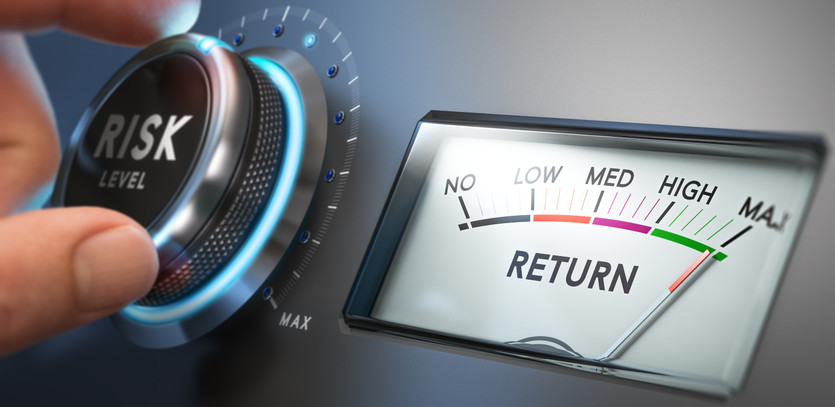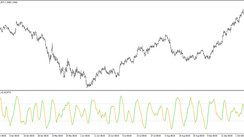Trading signifies the exchange of commodities or services among two or more participants. For instance, you exchange your hard-earned money for the gasoline that powers your vehicle. Historically, and even presently in certain societies, this exchange took form as bartering - swapping one item for another.
Here's a simple illustration: Individual A agrees to mend Individual B's shattered window, and in return, receives a basket of apples from Individual B's tree. This is a manageable, everyday trade example with a relatively controlled risk factor. To further mitigate risk, Individual A could request to inspect the apples to ascertain their quality before proceeding to repair the window. For thousands of years, trading has functioned this way - a practical and deliberate human activity.
Modern Day Trading
With the advent of the internet, the dynamics of trading have drastically shifted. The swift pace of online transactions often accelerates the risk factor, primarily due to the instant gratification and thrill of gaining profits within seconds. This quick turnaround can often ignite a gambling impulse, leading many traders to treat online trading more like a gamble rather than a professional venture requiring sound speculative practices.
Speculation in trading should not be mistaken for gambling. The distinction lies in risk management - speculators maintain some degree of risk control, while gamblers do not. A game like Poker can be played from both perspectives, with markedly different results.
Approaches to Betting
Three primary betting strategies exist: Martingale, anti-Martingale, and speculative. The term "Speculation" is derived from the Latin word "speculare," signifying to surveil or anticipate.
In the Martingale approach, you consistently double your bet after each loss, hoping that a winning streak will eventually help recover all losses and even make a minor profit.
The anti-Martingale strategy dictates halving your bets after each loss, but doubling them after each win. This technique presumes that you can benefit from a winning streak and profit accordingly. For online traders, this is usually the safer strategy, as it's always less risky to quickly accept losses and increase trade size when winning.
Nevertheless, no trade should be initiated without first ensuring the odds are in your favor. If this isn't clearly feasible, the trade should be avoided altogether.
Understanding the Odds
The first step in risk management is evaluating the likelihood of your trade's success. This evaluation requires both fundamental and technical analysis. You'll need to comprehend the market's dynamics you're trading in and identify probable psychological price trigger points, which can be determined using a price chart.
Once you've decided to proceed with the trade, the next crucial aspect is how you manage the risk. If you can quantify the risk, you can predominantly control it.
In order to stack the odds in your favor, it's vital to establish a cutoff point - a level at which you'll exit the market if the trade hits that point. The difference between your entry point and this cutoff point is your risk. It's essential to accept this risk before initiating the trade. If the potential loss is manageable, you can consider proceeding with the trade. If the loss seems unbearable, it's better to abstain from the trade to avoid stress and maintain objectivity.
As risk is the inverse of reward, you should also establish a second cutoff point - a level at which you'll adjust your original cutoff point to protect your position. This practice, known as sliding your stops, reduces your risk to nearly zero, assuming that the market is highly liquid and your trade will execute at that price. It's crucial to comprehend the differences among stop orders, limit orders, and market orders.
Liquidity Factors
Another risk determinant is liquidity, which ensures that there are enough buyers and sellers at current prices to smoothly and efficiently execute your trade. For instance, in forex markets, liquidity, especially in the major currencies, isn't typically an issue. This type of liquidity, known as market liquidity, accounts for roughly $6.6 trillion per day in trading volume.
However, this liquidity isn't necessarily accessible to all brokers and isn't the same for all currency pairs. As a trader, it's the broker's liquidity that will impact you. Unless you're trading directly with a large forex dealing bank, you'll likely depend on an online broker to manage your account and execute your trades. The risks associated with brokers are a separate topic, but as a rule of thumb, large, reputable, and well-capitalized brokers should meet the needs of most retail online traders.
Risk Per Trade
Another facet of risk is determined by the amount of trading capital you have at your disposal. The risk per trade should always be a small fraction of your total capital. An initial benchmark could be 2% of your trading capital. For instance, if you have $5000 in your account, the maximum permissible loss should be no more than 2%, which is $100 per trade. A 2% loss per trade means you could lose 50 times consecutively before depleting your account, which is highly unlikely if you have a sound system for stacking the odds in your favor.
The question now is: how do we accurately gauge the risk?
The answer lies in your price chart. Here's an illustrative example:
Let's say our initial cutoff point (stop loss) is set at 1.3534. To allow some leeway, we could set the stop loss to 1.3530. A suitable entry point could be at 1.3580, which is slightly above the hourly close high after a failed attempt to form a triple bottom. The difference between this entry and exit point is 50 pips. If you're trading with $5,000 in your account, your loss limit is 2% of your trading capital, which is $100.
Assuming you're trading mini lots, where one pip equals approximately $1, and your risk is 50 pips, each lot you trade risks $50. You could trade one or two mini lots, keeping your risk between $50-100. You should not trade more than three mini lots in this example to adhere to your 2% rule.
The Power of Leverage
Another substantial risk amplifier is leverage. Leverage allows you to utilize the bank's or broker's funds rather than solely your own. In the spot forex market, the leverage factor can be as high as 100:1. This means with a deposit of merely $1,000, you could trade $100,000. A one pip loss in a 100:1 leveraged position equates to $10. Hence, if you had 10 mini lots in the trade and you lost 50 pips, your loss would be $500, not $50.
However, one major advantage of trading the spot forex markets is the provision of high leverage. Due to the market's liquidity, it's easier to exit a position swiftly, making it simpler to manage leveraged positions. However, leverage is a double-edged sword. While it can magnify your profits, it can also erode your account just as fast.
The most challenging risk to manage, and often the most common reason for trader loss, is the trader's own behavioral patterns.
Every trader must own up to their decisions. Accepting losses as part of the trading process is a crucial mindset in trading. Losses aren't failures. However, not cutting your losses quickly can lead to poor trade management. Often, a trader might second-guess their system when a position starts to lose, hoping the market will turn around and the position will become profitable again. This approach might work on some occasions, but it can be disastrous when the loss worsens.
The antidote to such trader risk lies in self-improvement and the courage to admit when ego interferes with decision-making or when old habits become irresistible. A highly effective method to make your trading more objective is to maintain a trading journal. Record each trade, noting the reasons for entry and exit, and keep track of your system's efficacy. In other words, how confident are you that your system reliably stacks the odds in your favor, offering more profitable trade opportunities than potential losses?
In Conclusion
Risk is an inherent part of every trade, but as long as you can quantify it, you can manage it. Don't neglect the fact that risk can be exacerbated by excessive leverage in relation to your trading capital and a lack of market liquidity. Adopting a disciplined approach and cultivating good trading habits can help manage some risk, which is necessary to achieve substantial rewards.
Indeed, each trade you make carries a certain amount of risk. The key to success lies not in avoiding risk altogether, but in understanding and managing it effectively. The reckless use of leverage relative to your trading capital, or trading in markets lacking liquidity, can further amplify this risk. However, when approached with discipline and a set of good trading practices, accepting a calculated amount of risk becomes the gateway to substantial rewards.
Remember, successful trading isn't about winning every single trade, but about managing your trades in a way that the profitable ones outweigh the losing ones over time. It's about understanding the market, adopting strategies that align with your risk tolerance, and staying disciplined even when the market tests your resolve.
By employing effective risk management strategies, acknowledging the psychological aspects of trading, and diligently keeping a trading journal, you can transform your trading journey from a game of chance into a strategic pursuit. This will allow you to make informed decisions, manage your risks effectively, and ultimately, become a more successful trader.





